-
 Bitcoin
Bitcoin $117700
-0.03% -
 Ethereum
Ethereum $3805
0.49% -
 XRP
XRP $3.098
-1.00% -
 Tether USDt
Tether USDt $1.000
0.03% -
 BNB
BNB $792.8
-1.72% -
 Solana
Solana $177.9
-1.95% -
 USDC
USDC $1.000
0.02% -
 Dogecoin
Dogecoin $0.2202
-1.55% -
 TRON
TRON $0.3278
-2.92% -
 Cardano
Cardano $0.7641
-2.43% -
 Hyperliquid
Hyperliquid $42.21
-2.68% -
 Sui
Sui $3.758
-1.58% -
 Stellar
Stellar $0.4080
-3.21% -
 Chainlink
Chainlink $17.75
-0.33% -
 Bitcoin Cash
Bitcoin Cash $591.8
4.96% -
 Hedera
Hedera $0.2561
-3.09% -
 Avalanche
Avalanche $23.34
-4.24% -
 Litecoin
Litecoin $110.7
1.96% -
 UNUS SED LEO
UNUS SED LEO $8.956
-0.01% -
 Toncoin
Toncoin $3.410
0.79% -
 Ethena USDe
Ethena USDe $1.001
0.03% -
 Shiba Inu
Shiba Inu $0.00001288
-1.82% -
 Uniswap
Uniswap $10.07
-2.06% -
 Polkadot
Polkadot $3.807
-2.27% -
 Monero
Monero $308.2
-2.15% -
 Dai
Dai $1.000
0.03% -
 Bitget Token
Bitget Token $4.521
-0.30% -
 Pepe
Pepe $0.00001134
-1.52% -
 Cronos
Cronos $0.1457
0.65% -
 Aave
Aave $274.9
-2.47%
Do Bollinger Bands work for all cryptocurrencies?
Bollinger Bands help crypto traders spot volatility, overbought/oversold levels, and potential reversals, but work best when combined with RSI, volume, and trend analysis.
Jul 30, 2025 at 09:30 pm
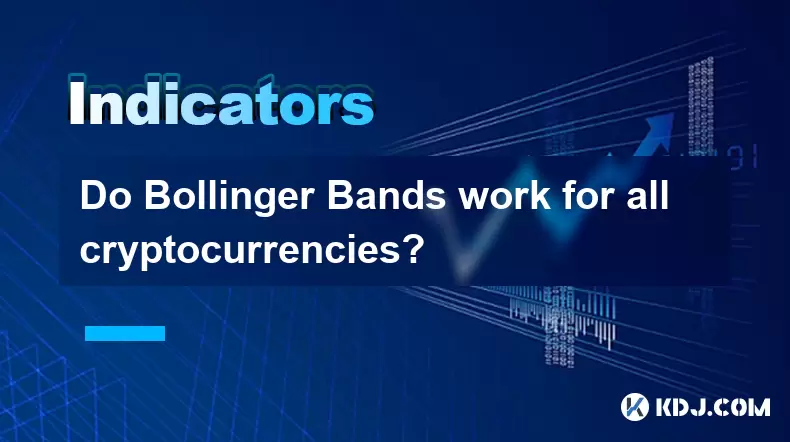
Understanding Bollinger Bands in Cryptocurrency Trading
Bollinger Bands are a widely used technical analysis tool developed by John Bollinger in the 1980s. They consist of three lines: a simple moving average (SMA), typically over 20 periods, and two outer bands that represent standard deviations above and below the SMA. These bands dynamically expand and contract based on market volatility. In the context of cryptocurrency trading, Bollinger Bands help traders identify potential overbought or oversold conditions, volatility shifts, and possible price reversals.
The core idea behind Bollinger Bands is that prices tend to stay within the upper and lower bands under normal market conditions. When the price touches or moves outside the bands, it may signal a continuation or reversal, depending on the broader context. For example, a price touching the upper band might suggest overbought conditions, while a touch of the lower band could indicate oversold levels. However, in strong trending markets, prices can ride along one of the bands for extended periods, making interpretation more nuanced.
Applicability Across Different Cryptocurrencies
While Bollinger Bands are applicable to all cryptocurrencies, their effectiveness varies significantly based on the asset’s liquidity, trading volume, and volatility profile. Major cryptocurrencies like Bitcoin (BTC) and Ethereum (ETH) tend to have higher liquidity and more consistent price action, making Bollinger Bands more reliable. These assets often exhibit patterns where price bounces off the bands or squeezes before a breakout, which aligns with classic Bollinger Band strategies.
In contrast, low-cap altcoins with erratic price movements and thin order books may generate misleading signals. For instance, a sudden pump or dump due to whale activity or social media hype can cause the price to breach a band without any meaningful follow-through. In such cases, the standard deviation calculation behind Bollinger Bands may not accurately reflect sustainable volatility, leading to false breakouts or premature entries.
Moreover, the timeframe used plays a crucial role. On shorter timeframes like 5-minute or 15-minute charts, Bollinger Bands may produce excessive noise for highly volatile altcoins. Conversely, on daily or weekly charts, the bands can offer clearer signals, especially when combined with volume analysis or other indicators.
How to Use Bollinger Bands Effectively on Crypto Charts
To implement Bollinger Bands correctly, traders must follow a structured approach. Most trading platforms, including TradingView, Binance, and CoinGecko, support Bollinger Bands as a built-in indicator. Here’s how to set them up:
- Open your preferred charting platform and select the cryptocurrency pair you want to analyze.
- Locate the "Indicators" button, usually found at the top of the chart interface.
- Search for "Bollinger Bands" in the indicator library and click to apply.
- Adjust the settings: the default is a 20-period SMA with 2 standard deviations. For more sensitivity, reduce the deviation to 1.5; for smoother bands, increase to 2.5.
- Confirm the settings and observe how the bands interact with price action.
Once applied, monitor key patterns such as the Bollinger Squeeze, where the bands narrow significantly, indicating low volatility and a potential breakout. Traders often wait for a candle to close outside the bands or for volume to spike before entering a trade. Another useful pattern is the "double bottom" near the lower band accompanied by a bullish candlestick reversal, which may signal a buying opportunity.
Combining Bollinger Bands with Other Indicators
Relying solely on Bollinger Bands can lead to inaccurate decisions, especially in the unpredictable crypto market. To improve accuracy, combine them with complementary tools. The Relative Strength Index (RSI) is particularly effective. When the price touches the lower Bollinger Band and the RSI is below 30, it strengthens the case for an oversold bounce. Conversely, an RSI above 70 near the upper band reinforces overbought conditions.
Another powerful combination is with volume indicators. A breakout above the upper band on high volume is more likely to sustain than one on low volume. Similarly, a drop below the lower band with diminishing volume may indicate a false breakdown. The Moving Average Convergence Divergence (MACD) can also confirm trend direction. For example, if the price is near the upper band and the MACD histogram is rising, the uptrend may have momentum.
Some traders use Bollinger Bands with Fibonacci retracement levels. If a pullback reaches the 61.8% Fibonacci level and coincides with the middle SMA of the Bollinger Bands, it may act as a strong support zone. This multi-layered analysis reduces the risk of acting on isolated signals.
Limitations and Risks in Crypto Markets
Despite their popularity, Bollinger Bands have notable limitations in cryptocurrency trading. One major issue is lagging nature—since they are based on moving averages, they react to past price data and may not anticipate sudden market shifts. During news-driven events like regulatory announcements or exchange hacks, prices can gap through the bands with no warning.
Another risk is over-interpretation of band touches. In a strong bull run, Bitcoin might trade above the upper band for days, misleading traders into shorting prematurely. Similarly, during bear markets, repeated touches of the lower band do not guarantee a reversal. The bands reflect volatility, not momentum, so they should not be used in isolation to predict trend direction.
Market manipulation is also a concern, especially in smaller cryptocurrencies. Pump-and-dump schemes can create artificial volatility that distorts the bands. A sudden spike might push the price far beyond the upper band, but the move lacks organic buying pressure and collapses quickly. Traders must assess the broader market context, including order book depth and on-chain metrics, to validate signals.
Customizing Bollinger Bands for Specific Cryptos
Optimal Bollinger Band settings can vary between cryptocurrencies. For stable, high-volume assets like BTC/USDT, the default 20,2 settings work well. However, for more volatile tokens like Shiba Inu (SHIB) or Dogecoin (DOGE), adjusting the parameters can improve performance.
Consider these adjustments:
- For highly volatile cryptos, increase the standard deviation to 2.3 or 2.5 to reduce false signals.
- On 1-hour or 4-hour charts, use a 50-period SMA for smoother bands that filter out short-term noise.
- For scalping on 5-minute charts, a 10-period SMA with 1.5 deviations may capture quick reversals more effectively.
Backtesting these configurations on historical data is essential. Most platforms allow replay mode or strategy testing. For example, test a Bollinger Band bounce strategy on Cardano (ADA) over the past six months to evaluate win rate and risk-reward ratio before live trading.
Frequently Asked Questions
Can Bollinger Bands predict exact price tops and bottoms in crypto?
No, Bollinger Bands do not predict exact turning points. They highlight areas of potential reversal based on volatility and relative price position. A touch of the upper or lower band suggests extremity, but confirmation from candlestick patterns or volume is necessary before acting.
Should I use Bollinger Bands on all timeframes equally?
Different timeframes yield different results. Shorter timeframes like 5-minute charts generate more signals but with higher noise. Daily or weekly charts provide stronger, more reliable signals, especially for long-term traders. Adjust sensitivity based on the timeframe.
What happens when the bands are extremely wide apart?
Wide bands indicate high volatility. This often occurs after major price movements or news events. It suggests that the market is in a strong trend or experiencing panic. Caution is advised, as a reversal or consolidation may follow.
Is it safe to trade every time price touches a Bollinger Band?
No, trading every touch can lead to losses, especially in trending markets. Many touches are part of ongoing momentum. Always assess the trend direction, volume, and use additional confirmation tools before entering a trade.
Disclaimer:info@kdj.com
The information provided is not trading advice. kdj.com does not assume any responsibility for any investments made based on the information provided in this article. Cryptocurrencies are highly volatile and it is highly recommended that you invest with caution after thorough research!
If you believe that the content used on this website infringes your copyright, please contact us immediately (info@kdj.com) and we will delete it promptly.
- Bitcoin, Penguins, and Meme Coins: A Wild Ride in Crypto Town
- 2025-07-31 16:30:14
- Whale Movement and Altcoins: Buying Pressure Heats Up!
- 2025-07-31 16:30:14
- Pi Network's Price Crash: A Crypto Disappointment or a Buying Opportunity?
- 2025-07-31 17:10:12
- Ether Machine's ETH Accumulation: A New York Minute on Corporate Crypto Strategies
- 2025-07-31 17:10:12
- Bitcoin Price on the Edge: Trendline Break or Breakdown?
- 2025-07-31 17:50:12
- Dogecoin, Investors, and Ozak AI: A New Era of Crypto Investments?
- 2025-07-31 17:50:12
Related knowledge
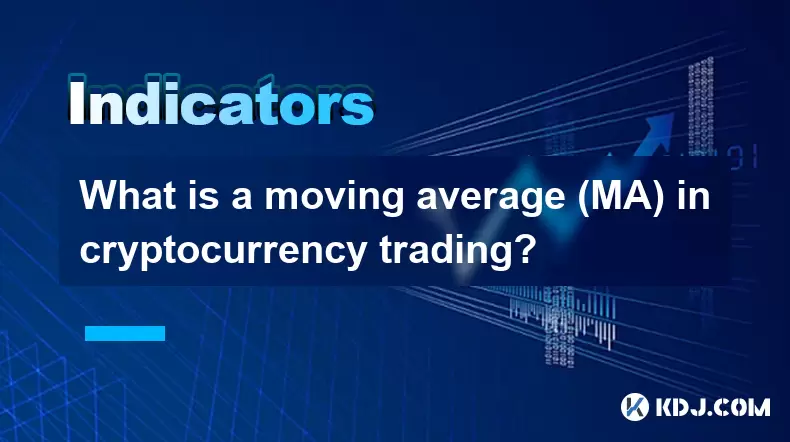
What is a moving average (MA) in cryptocurrency trading?
Jul 31,2025 at 06:30pm
Understanding the Concept of Moving Average (MA)A moving average (MA) is a widely used technical analysis tool in cryptocurrency trading that helps sm...
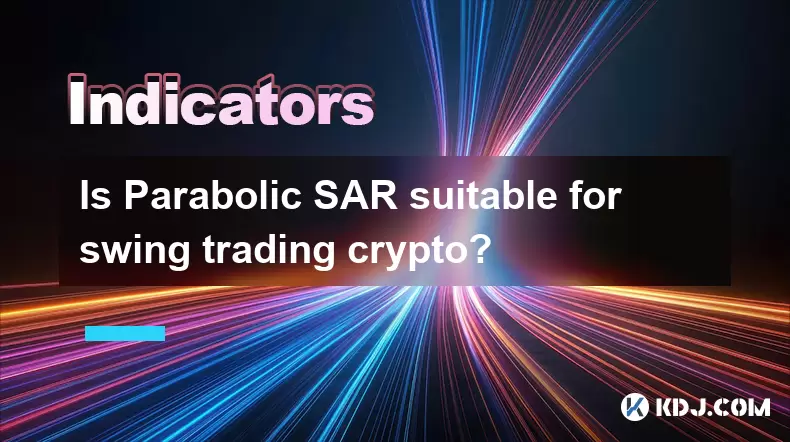
Is Parabolic SAR suitable for swing trading crypto?
Jul 31,2025 at 05:29pm
Understanding Parabolic SAR in Cryptocurrency TradingThe Parabolic SAR (Stop and Reverse) is a technical indicator developed by J. Welles Wilder that ...
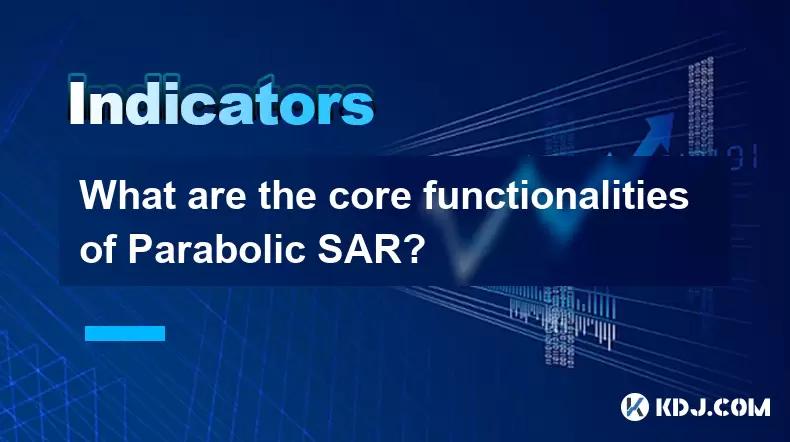
What are the core functionalities of Parabolic SAR?
Jul 31,2025 at 04:57pm
Understanding the Parabolic SAR IndicatorThe Parabolic SAR (Stop and Reverse) is a technical analysis tool developed by J. Welles Wilder Jr. It is pri...
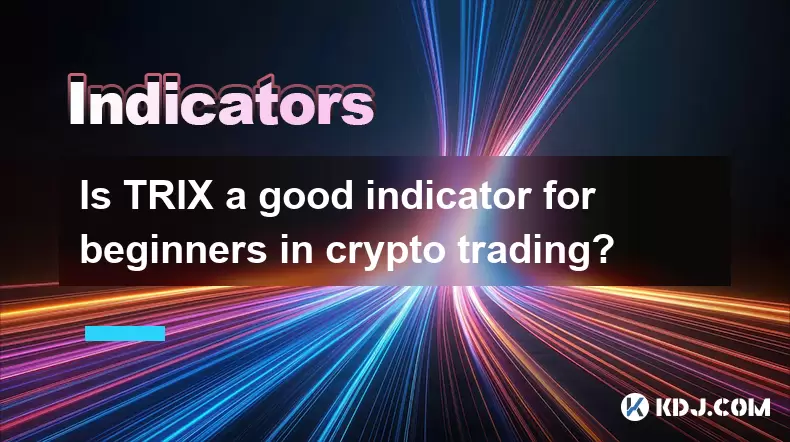
Is TRIX a good indicator for beginners in crypto trading?
Jul 31,2025 at 06:16pm
Understanding the TRIX Indicator in Cryptocurrency TradingThe TRIX (Triple Exponential Average) indicator is a momentum oscillator designed to filter ...
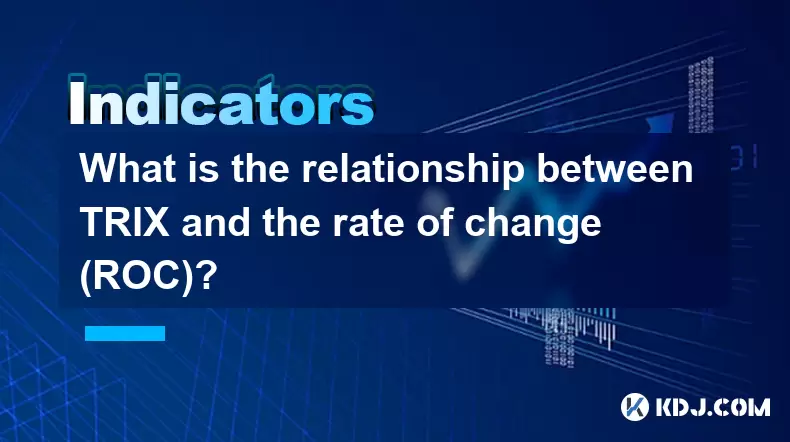
What is the relationship between TRIX and the rate of change (ROC)?
Jul 31,2025 at 03:14pm
Understanding TRIX and Its Core MechanismTRIX, or the Triple Exponential Average, is a momentum oscillator used in technical analysis to identify over...
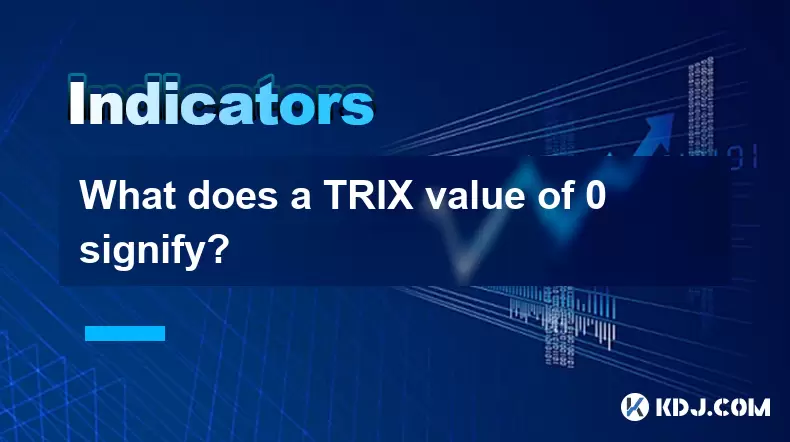
What does a TRIX value of 0 signify?
Jul 31,2025 at 02:21pm
Understanding the TRIX Indicator in Cryptocurrency TradingThe TRIX (Triple Exponential Average) indicator is a momentum oscillator used in technical a...

What is a moving average (MA) in cryptocurrency trading?
Jul 31,2025 at 06:30pm
Understanding the Concept of Moving Average (MA)A moving average (MA) is a widely used technical analysis tool in cryptocurrency trading that helps sm...

Is Parabolic SAR suitable for swing trading crypto?
Jul 31,2025 at 05:29pm
Understanding Parabolic SAR in Cryptocurrency TradingThe Parabolic SAR (Stop and Reverse) is a technical indicator developed by J. Welles Wilder that ...

What are the core functionalities of Parabolic SAR?
Jul 31,2025 at 04:57pm
Understanding the Parabolic SAR IndicatorThe Parabolic SAR (Stop and Reverse) is a technical analysis tool developed by J. Welles Wilder Jr. It is pri...

Is TRIX a good indicator for beginners in crypto trading?
Jul 31,2025 at 06:16pm
Understanding the TRIX Indicator in Cryptocurrency TradingThe TRIX (Triple Exponential Average) indicator is a momentum oscillator designed to filter ...

What is the relationship between TRIX and the rate of change (ROC)?
Jul 31,2025 at 03:14pm
Understanding TRIX and Its Core MechanismTRIX, or the Triple Exponential Average, is a momentum oscillator used in technical analysis to identify over...

What does a TRIX value of 0 signify?
Jul 31,2025 at 02:21pm
Understanding the TRIX Indicator in Cryptocurrency TradingThe TRIX (Triple Exponential Average) indicator is a momentum oscillator used in technical a...
See all articles

























































































